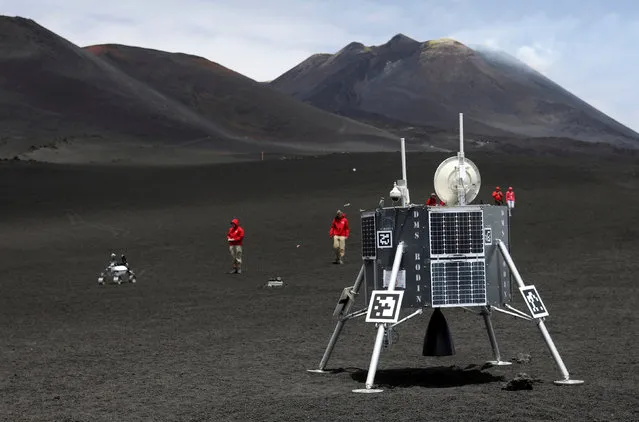
Scientists from German Aerospace Center are seen working as they test some robots on the Mount Etna, Italy on July 4, 2017. Mount Etna, in Sicily, is a test bed for the approximately three-foot high, four-wheeled machine ahead of a future mission to the moon. It is being conducted by the German Aerospace Centre, the agency which runs Germany's space program. The program has enlisted experts from Germany, Britain, the United States and Italy to research ROBEX (Robotic Exploration of Extreme Environments) with the aim of improving robotic equipment that will be used in space. “This is aimed at simulating a future, hypothetical landing mission on the moon or Mars and they use a lot of robots which are there to transport and install different instruments”, said Boris Behncke, a volcanologist from the National Vulcanology Institute in Catania, near Mount Etna. Scientists also hope to use the robots to explore the depths of Mount Etna and relay back useful technical data on seismic movement. The techniques learned on Etna would then be deployed in lunar missions or in the exploration of Mars. An initial robotic testing phase has nearly been completed on the Piano del Lago area of the volcano, a desolate stretch of terrain buffeted by strong winds. Next, a network of equipment including rover robots and drones will be mounted to monitor seismic activity that closely simulates that which would be used on the moon. (Photo by Antonio Parrinello/Reuters)
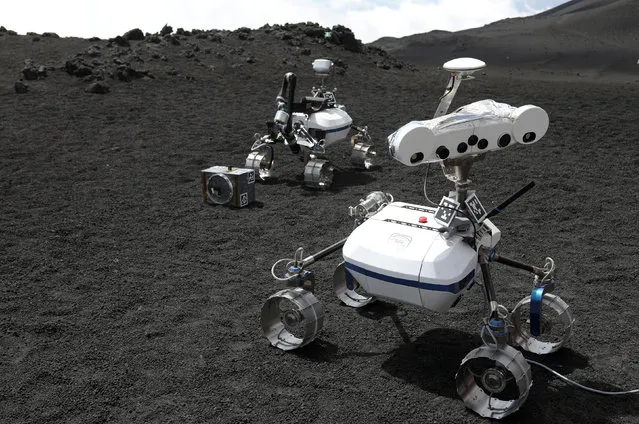
Robots are seen on Mount Etna, Italy on July 4, 2017. (Photo by Antonio Parrinello/Reuters)
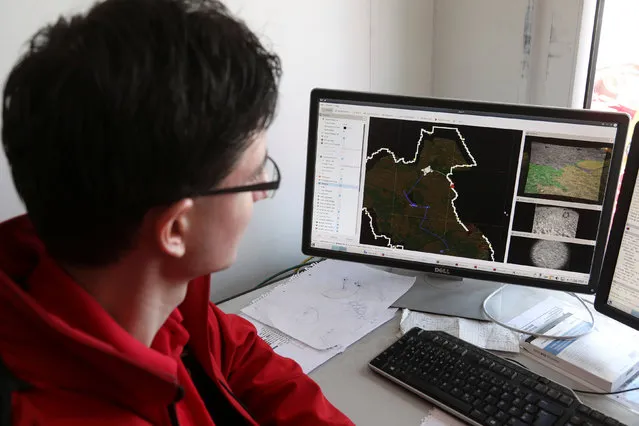
A scientist from German Aerospace Center is seen working as he tests some robots on the Mount Etna on July 4, 2017. Scientists also hope to use the robots to explore the depths of Mount Etna and relay back useful technical data on seismic movement. The techniques learnt on Etna would then be deployed in lunar missions or in the exploration of Mars. (Photo by Antonio Parrinello/Reuters)
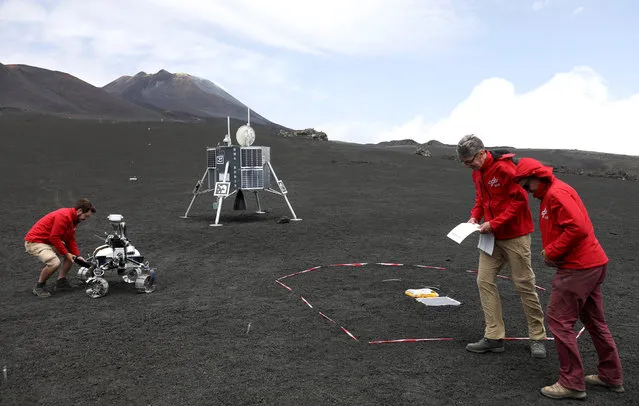
Scientists from German Aerospace Center are seen working as they test some robots on Mount Etna, Italy on July 4, 2017. (Photo by Antonio Parrinello/Reuters)
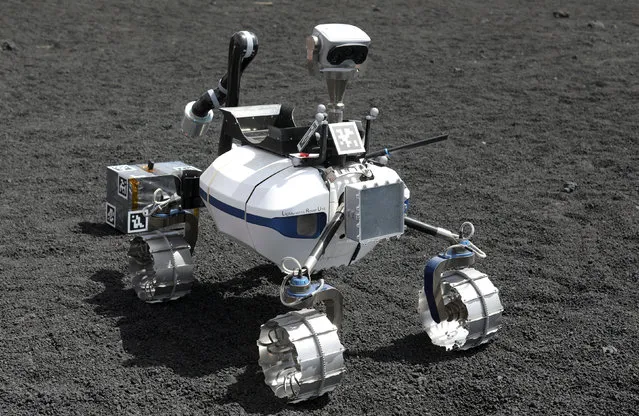
A robot is seen on Mount Etna, Italy on July 4, 2017. (Photo by Antonio Parrinello/Reuters)
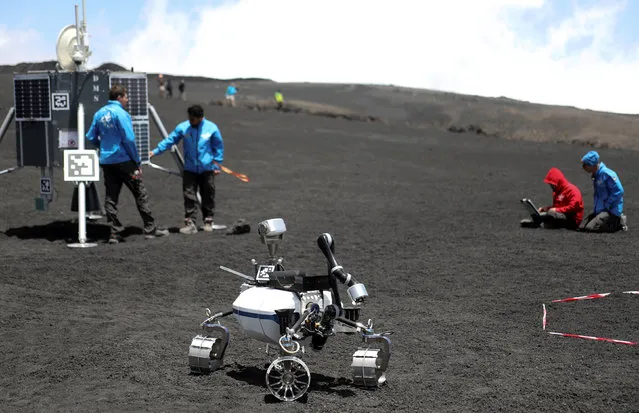
Scientists from German Aerospace Center are seen working as they test some robots on the Mount Etna, Italy on July 4, 2017. (Photo by Antonio Parrinello/Reuters)
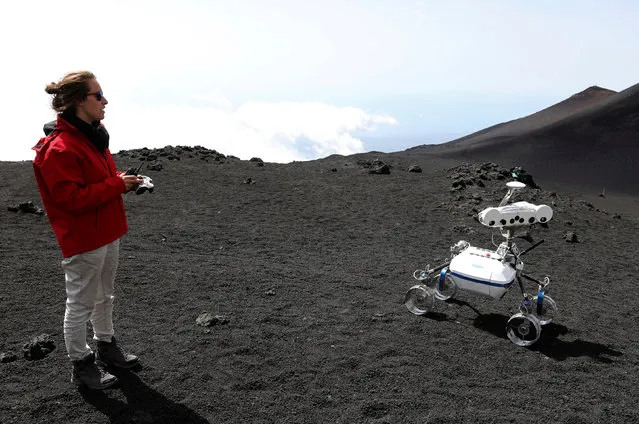
A scientist from German Aerospace Center controls a robot on Mount Etna, Italy on July 4, 2017. (Photo by Antonio Parrinello/Reuters)
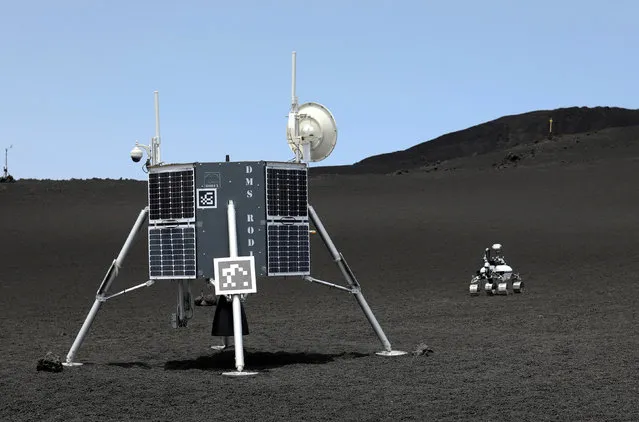
Robots are seen on Mount Etna, Italy on July 4, 2017. (Photo by Antonio Parrinello/Reuters)
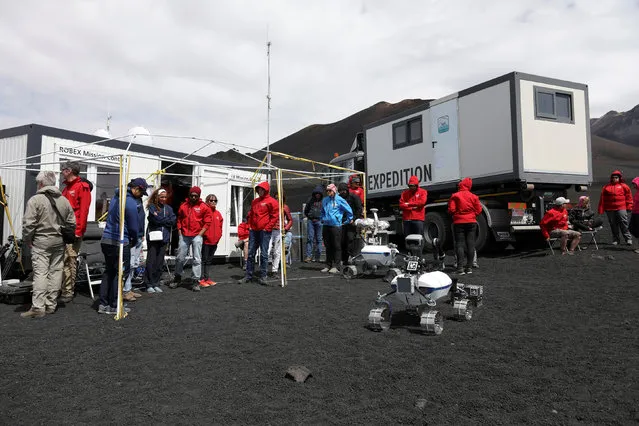
Scientists from German Aerospace Center stand in front of a robot on Mount Etna, Italy on July 4, 2017. (Photo by Antonio Parrinello/Reuters)
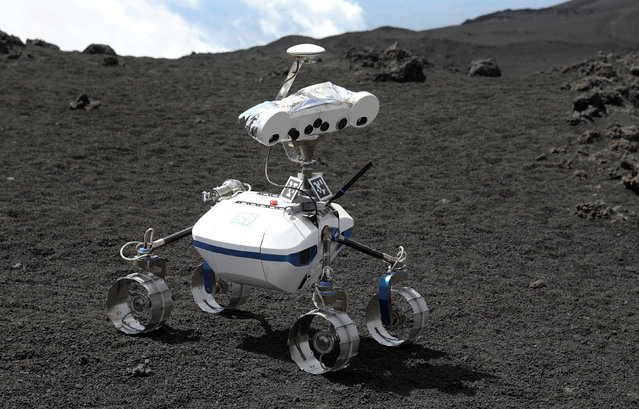
A robot is seen on Mount Etna, Italy on July 4, 2017. Mount Etna, in Sicily, is a test bed for the approximately three-foot high, four-wheeled machine ahead of a future mission to the moon. It is being conducted by the German Aerospace Centre, the agency which runs Germany's space programme. (Photo by Antonio Parrinello/Reuters)
05 Jul 2017 06:24:00,
post received
0 comments
